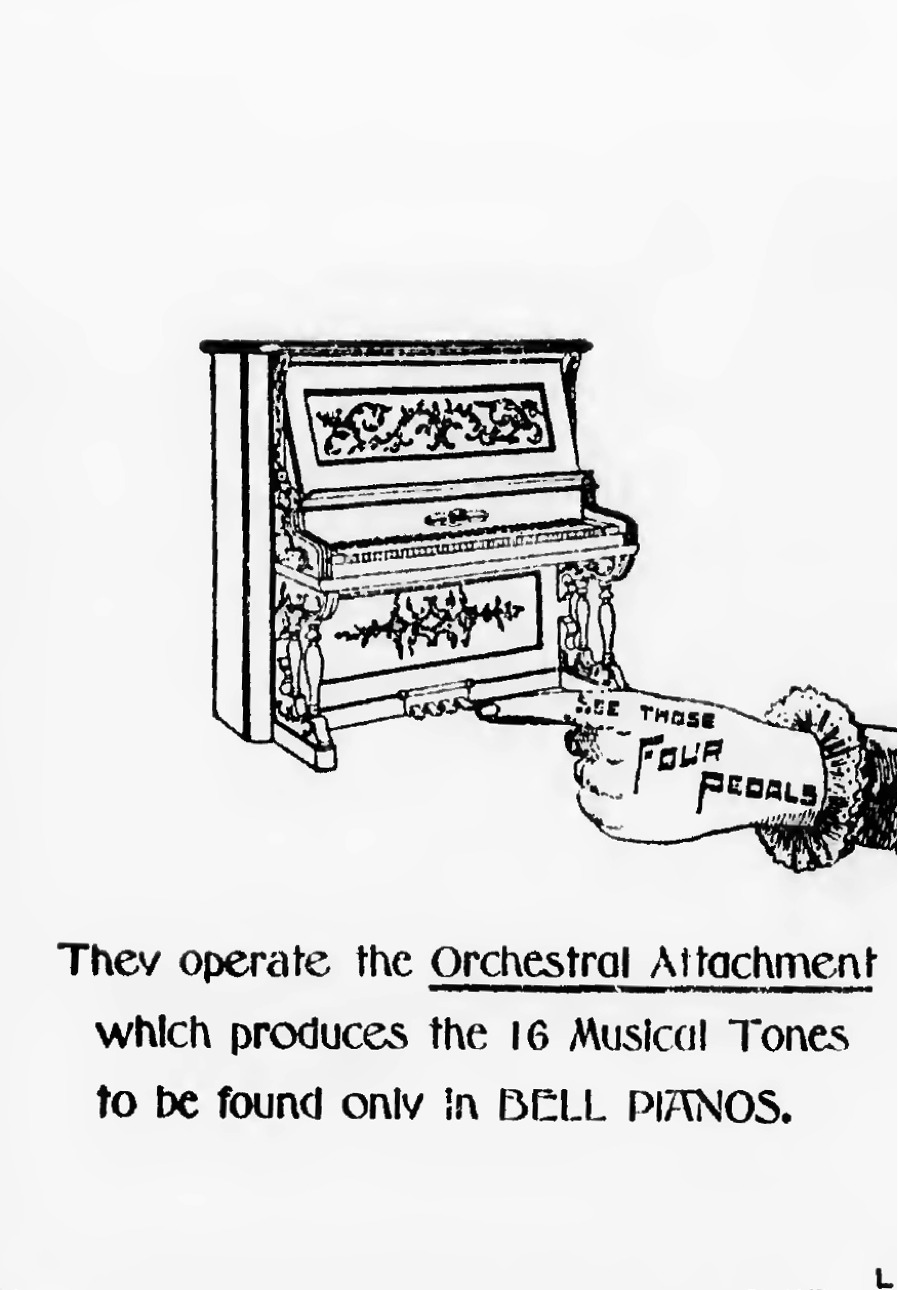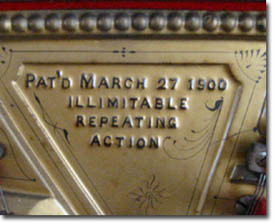Bell Piano & Organ Company
Overview
The Bell Piano & Organ Company was started by brothers William and Robert Bell in 1864. The Guelph, ON-based company produced 25 melodeons in their first year of manufacturing, and continued making melodeons and reed organs until the company was sold to a British syndicate in 1888, when the first pianos were made. [1]
Bell Pianos were favoured by royalty and world class performers across the world, as listed in one of their catalogs:
H. R. H. The Princess Louise
H. E. The Marquis of Lansdowne
Rt. Hon. Marquis of Dufferin and Ava.
H. M. The King of Holland
H. M. The Queen of Italy
The Mikado of Japan
Madame Adelina Patti Nicolini
Sir John Stainer, Mus. Doc. London, Eng.
Count Von Felbringer of Austria
The Sultan of Turkey [2]
By 1928, over 170,000 pianos and organs had been manufactured, and the company was bought by John S. Dowling of Brantford, ON. Dowling went on to sell the company to Lesage Pianos, who then utilized the Bell design on their own instruments. [1]
Mechanical Improvements
'Grand Repeating Action'
Bell Pianos were renowned for their patented "Grand Repeating Action" or "Illimitable Repeating Action", which allows for the keys to reset faster than standard upright pianos, allowing the pianist the ability to achieve faster speeds on repeated notes. [3]
'Orchestral Attachment'
In addition, Bell manufactured an 'orchestral attachment', which enables the pianist to achieve 16 unique timbral qualities of sound by utilizing a fourth pedal. [2] This feature seems to based off of either the Wing & Son 'Orchestral Accompaniment' (with 5 pedals) whose pianos date back to 1873, or the Crown Piano 'Orchestral Attachment' (created by George P. Bent) whose product goes back to 1870. [4][5]
The attachment would make the piano very sought after for venues where one might need a variety of instruments, as you could save quite a bit of money by hiring just a pianist to cover many orchestral instruments. This convenience would be immensely helpful in silent film theatres to add a greater timbral range to the organ that would most likely already be in place.
At this time, there are no videos of Bell pianos demonstrating the different types of sounds from the attachment, but it would likely sound very similar to this Wing & Son 5-pedal upright model.
____________________________________________________________
[1] Hayes, Florence. "Bell Piano and Organ Co." The Canadian Encyclopedia, https://www.thecanadianencyclopedia.ca/en/article/bell-piano-and-organ-co-emc/.
[2] "Bell (Canada)." Antique Piano Shop, https://antiquepianoshop.com/online-museum/bell-canada/.
[3] "Bell Piano & Organ Company - Canadian Pianos." Thomson Lawrie, https://www.pianotech.ca/bell-pianos.htm.
[4] "Wing & Son." Antique Piano Shop, antiquepianoshop.com/online-museum/wing-son/.
[5] "Crown." Antique Piano Shop, antiquepianoshop.com/online-museum/crown/.

